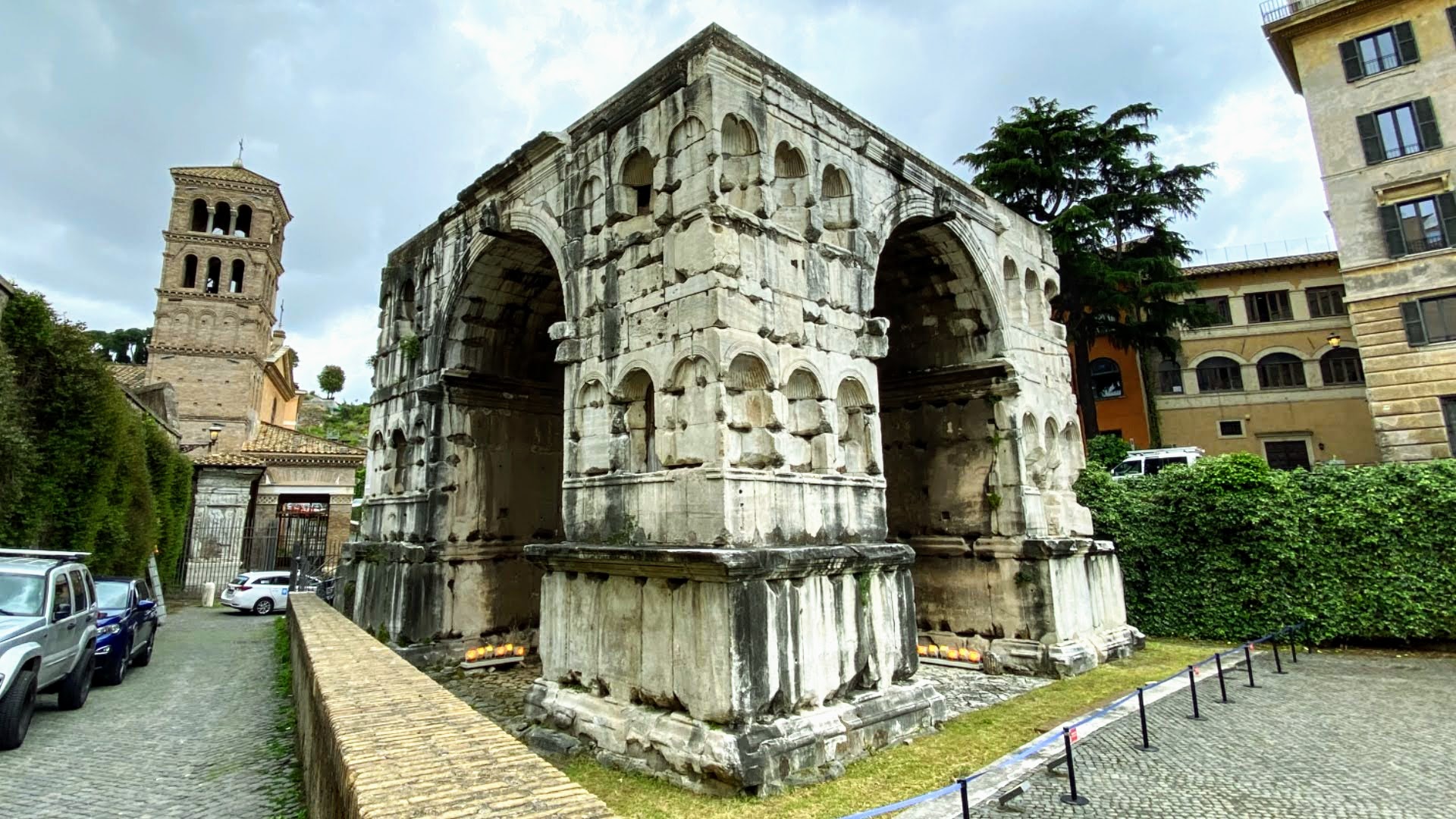
It was the last monumental building erected in the eastern part of the Forum Boarium, a vast area that played a preeminent role in the creation of the city of Rome and that was for centuries at the center of an intense commercial activity due to its proximity to the Tiber which made it, since the most ancient times, a natural point of landing and a trans-regional meeting place.
The name by which it is improperly known dates back to the 16th century but the imposing four-faced arch is probably to be identified with the Arcus Divi Constantini mentioned in the Roman Regionary Catalogues, the register of buildings in Rome compiled in the 4th century AD. Recent studies have in fact clarified how the arch had a celebratory function and was built by the sons of Emperor Constantine in honor of their father on his death.
Unlike all the other honorary arches built in Rome, the Arch of Janus has a peculiar square plan with four pillars supporting a cross vault on which rested a high attic. Built in brick and covered with marble slabs, many of them reused, the building is a splendid example of the 4th century art. Two rows of three niches decorate the pillars and 48 statues were originally placed inside them. However, the only remains of the sculptural ornament preserved today are the four female figures on the keystones: Roma, Juno and, perhaps, Minerva and Ceres.
As with many other buildings of imperial Rome, its survival is due to a subsequent reuse with a different function: in the Middle Ages the arch served as the basis for a tower of the influential Frangipane family who used it as a fortress. Partially buried over the centuries, the building came back to light in 1827, when the attic was improperly removed because it was wrongly considered to be part of the medieval building.
Information
From November 13, 2021, the monument is open every Saturday from 10 to 14 and from the last Sunday in March, with summer time from 16 to 20
 Condividi
Condividi
Location
To find out about all accessibility services, visit the Rome accessible section.











































